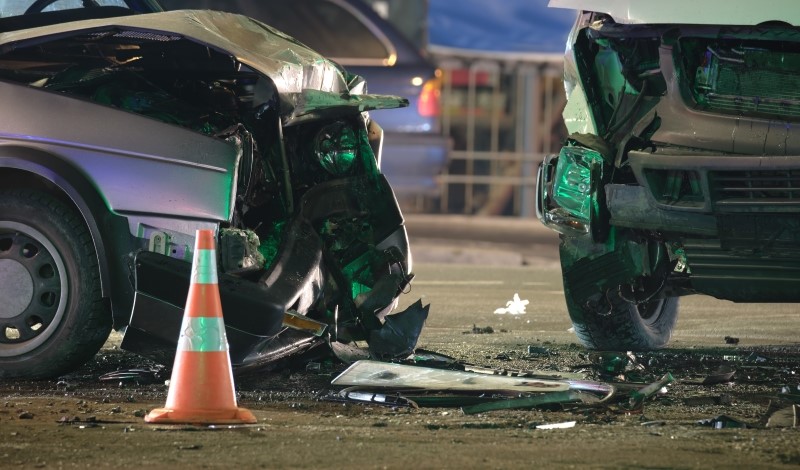
Regulators should focus on forging a safety culture to reduce automotive accidents and fatalities.
Transportation safety is a critical topic of policy research. As a function of population growth and miles traveled, U.S. transportation safety demonstrates a significant reduction in the number of fatalities during the last 30 years. This progress likely reflects “safety culture,” or the set of beliefs, practices, norms, and rules which mediate transportation.
For example, air travel deaths have plummeted by two-thirds, even though total miles traveled have increased by 42 percent over the last 30 years. Today, the few aviation-related deaths that occur each year happen on private, not scheduled commercial, flights.
Some scholars attribute the gains in air safety to the confidential, voluntary, and non-punitive Aviation Safety Reporting System, although the relationship between reporting and reduced accidents is unclear. But research suggests more clearly that these gains from learned practices as a psychological or social concept can improve safety, particularly in workplaces facilitated by manager commitment and employee involvement.
Such safety culture dynamics underpin the operation of railroads and are credited with reducing risk of accidents in the Swedish rail sector by 81 percent. The Bureau of Transportation Statistics observes that most rail fatalities are related to trespassing, something beyond the control of rail operators.
Although air travel and rail transport are increasingly and impressively safe, a disturbing trend of increasing fatalities, both for pedestrians and motorists, has emerged on roadways. As data compiled by the U.S. Department of Transportation demonstrates, the United States has experienced a significant long-term improvement for air and rail fatalities, but stasis for highway travel. The trend shows that transport deaths have held constant, even though the U.S. population has increased by one-third. However, highway deaths still account for the overwhelming total: 94 percent in 1991, and 95 percent in 2021.
It could be argued that the number of highway deaths is lower because population and miles traveled have increased by one-third. But the data suggest a bleak picture when it comes to motorcycles and light trucks. The death levels associated with these vehicles have increased in real numbers. According to a 2022 U.S. Centers for Disease Control and Prevention study, the United States has the worst performance among developed nations as measured in traffic deaths per 100,000 people.
Further data on motorcycles from the National Highway Traffic Safety Administration (NHTSA) shows that there are typically about 8.5 million registered motorcycles in the United States. 2021 was the worst year in recorded U.S. history for motorcycle safety: 5,932 deaths, and some 82,000 injuries.
A variety of explanations for this increase in fatalities and injuries are possible. NHTSA notes that alcohol impairment remains a problem across the board for motor vehicle death, with the presence of higher blood alcohol noted in 27 percent of motorcycle deaths, with a whopping 41 percent of motorcyclists in single-vehicle crashes being alcohol impaired. By contrast, increased blood alcohol levels are noted in 23 percent of passenger cars deaths, 19 percent of light trucks, and 3 percent of large truck deaths. NHTSA also reports that 36 percent of motorcyclists in fatal accidents lack a valid drivers’ license. Furthermore, there is no federal helmet law, so each state sets its own requirement.
A National Institutes of Health model suggests that marijuana legalization across the United States is associated with an 18 percent increase in automobile injuries and a 4 percent increase in fatalities depending on the state. Another explanation is that the growing number of motor vehicles is associated with pedestrian death.
Building a safety culture relies on learned behaviors, enforcement, monitoring, and responsibility. It requires aligning public policy with the operations of America’s industrial sectors for air, rail, and public transit, so policymakers can oversee objectives and hold individuals accountable. Outside of commercial truck drivers, U.S. motorists are not part of a workforce safety culture. Drivers are not employees conforming to standards set by bosses.
U.S. roadways are governed effectively under what the Transportation Department calls a “safe system approach.” This is a risk management paradigm which attempts to prevent and minimize adverse outcomes through protective and preventative measures. Rather than hold humans accountable, this approach accepts that people are flawed and attempts to design systems to compensate for their inevitable errors. One example of the safe systems approach is reflected in the Honoring Abbas Family Legacy to Terminate Drunk Driving Act, which requires cars to be equipped with sensors that disable the car in the event of a driver with excessive alcohol levels.
An example of safety culture in motoring, by contrast, could include drivers’ licensing and training requirements which attempt to regulate behavior for preferred outcomes. In these respects, the United States has lower age minimums and fewer training requirements than most countries and the highest acceptable legal level for blood alcohol. Of course, there are likely elements of culture and systems approaches in any sector.
The troubling, increasing rate of motor vehicle death receives relatively little focus, whereas discrete transport mishaps—such as air door blowouts mid-flight—garner more policy and press attention, even though no deaths occurred. This is not to dismiss fear or injury, but focus does matter in reducing fatality. A case in point is the Ohio train derailment in 2023, which prompted the Railway Safety Act of 2023, even though no one died. The bill’s provisions for minimum crew size, maximum life of tank cars, and fees for rail carriers have nothing to do with the cause of the derailment: a faulty wheel bearing. In any event, the rail industry has committed to continue to foster safety culture which is more likely to ensure that derailments are reduced and eliminated in the future.




